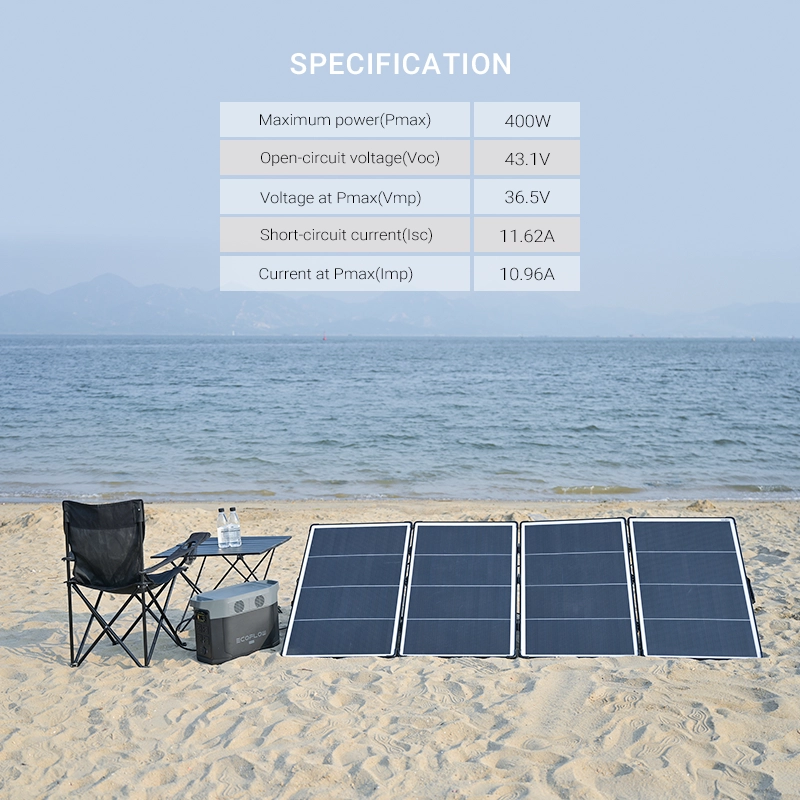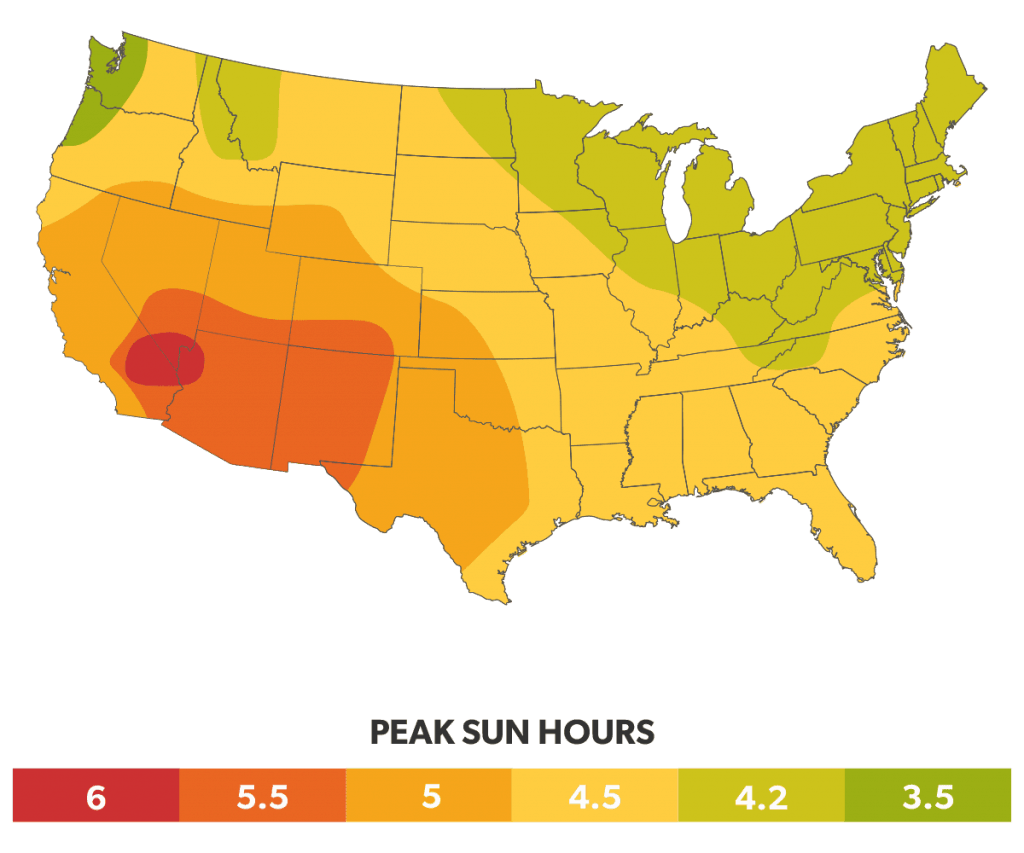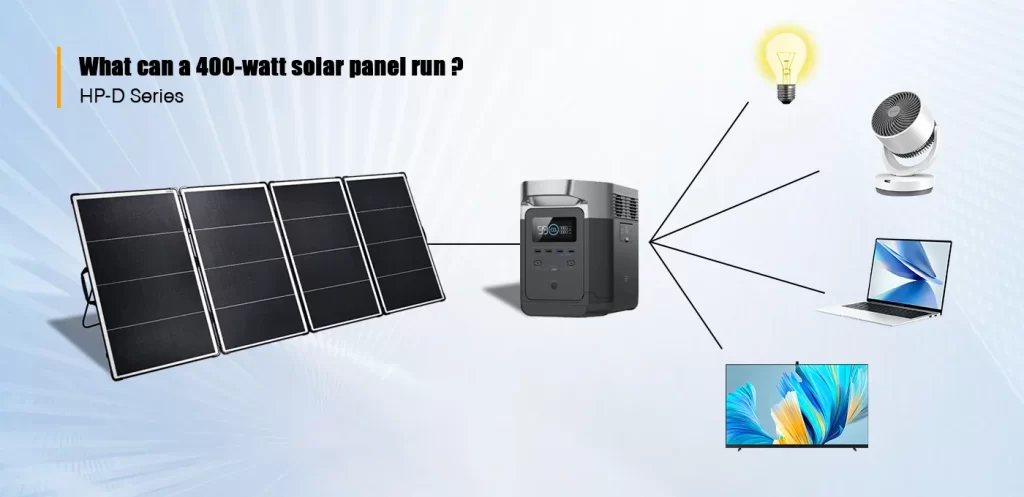Solar energy is a renewable and clean source of energy that can be converted into electricity through solar panels. Solar panels vary in power from a few dozen watts in some cases to as much as several hundred watts in others. In this article, we will focus on 400-watt PV panels, which are a common type of high-efficiency solar panel on the market today. Through this article, we hope to provide you with a deeper understanding of the 400-watt solar panel and its potential and value in the future of sustainable development.

What is a 400-watt solar panel?
A 400-watt solar panel is a solar panel that can output 400 watts of power under STC. Such solar panels are usually made of monocrystalline or polycrystalline silicon and have high conversion efficiency and stability. Generally speaking, the size of a 400-watt solar panel is about 2 meters by 1 meter and weighs about 20 kilograms.

How much power does a 400-watt solar panel produce?
To calculate the amount of energy produced by a 400-watt solar panel in a given amount of time, you need to consider the relationship between power and time. Power is the amount of energy produced per unit of time and is usually expressed in watts (W). If you know that the panel has 400 watts of power and then run it for a period measured in hours, you can use the following formula to calculate the energy produced:
Energy (kWh) = Power (Watts, W) × Time (hours, h) / 1000
Assuming that the solar panel runs at 400 W for 5 hours, the energy produced will be:
Energy = 400 W × 5 h / 1000 = 2 kWh
So, a 400-watt solar panel can produce 2 kWh of energy in 5 hours. This is an ideal situation and the actual energy generation may be affected by weather, sunlight intensity, and other factors. You can also find the hours of sunshine in your area based on the US peak hours map below, and then use the formula to get the amount of energy produced by 400w solar panels.
| PEAK SUN HOURS | 6 Hours | 5.5 Hours | 5 Hours | 4.5 Hours | 4.2 Hours | 3.5 Hours |
| GENERATED ENERGY | 2.4kWh | 2.2kWh | 2kWh | 1.8kWh | 1.68kWh | 1.4kWh |

What Can I Run With A 400 Watt Solar Panel?
How know what equipment can be run by a 400-watt solar panel? We need to consider several factors:
- The power and operating time of the equipment
- The actual output and losses of solar panels
- Capacity and efficiency of batteries and inverters
- Power output of 400-watt solar panels
Taking all these factors into account, we can estimate how much available power can be generated by a 400-watt solar panel per day and calculate the total power required by the different devices based on their power and operating hours.
Suppose we use a 12V battery with a capacity of 183Ah, a depth of discharge (DoD) of 80%, and a 500W inverter with an efficiency of 90%. Then we can obtain the following calculation:
A 400 W solar panel can produce about 1600 watt hours (Wh) per day, which is 400 W times 4 peak sunshine hours.
Based on the above results, we can conclude a 400-watt solar panel can run :
| Device | Power Consumption (W) | Usage Duration (hours) | Energy Consumption (Wh) | Percentage of Total System Power |
|---|---|---|---|---|
| 40W Fan | 40 | 24 | 960 | 60% |
| 90W Laptop Charger | 90 | 4 | 360 | 22.5% |
| 120W TV | 120 | 4 | 480 | 30% |
| 15W LED Bulb | 15 | 24 | 360 | 22.5% |
A 400-watt solar panel can produce 2 kWh of energy in 5 hours. So it can run fans, laptop chargers, TVs, or LED light bulbs.
All four of the above devices can run on a 400-watt solar panel individually or simultaneously, as long as they do not exceed the total output and total power of the system. Of course, these are just a few examples, and there are many other types and sizes of equipment that can run on a 400-watt solar panel, as long as they are reasonably calculated and matched according to their power and operating hours.

### User Reviews
“Using a 400 watt solar panel on my RV has been a game-changer. It powers all my essential devices seamlessly!” – John D.
How many amps is 400 watts?
The number of amps depends on the voltage.
To calculate the amperage (amps) for a given wattage (watts), you can use the formula:
Amps = Watts / Volts
If you know the voltage, you can calculate the amps.
For example, if the voltage is 110 volts (typical in the United States), then the amps would be approximately 3.64 amps. If the voltage is 220 volts (typical in many other countries), then the amps would be approximately 1.82 amps. Please replace the voltage in the formula with the actual voltage in your case to get an accurate result. Voltage to Amperage Calculator can help.
For example, if you’re working with a 120-volt circuit:
Amps = 400 watts / 120 volts Amps = 3.33 amps
So, 400 watts at 120 volts is approximately 3.33 amps. Keep in mind that if you’re dealing with a different voltage, the amperage will be different.
Where can I use a 400-watt solar panel?
A 400-watt solar panel can be adapted to an RV, emergency backup, off-grid cabins, etc. It can be coupled with appropriate capacity batteries and inverters to achieve a stable and reliable power supply.
- RV. Is a 400-watt solar panel enough for an RV? If you like to drive or camp, you may need a reliable and convenient power supply system to provide the necessary electricity for your RV. 400-watt solar panels can be installed on the top or side of your RV to provide enough power for your lights, refrigerator, air conditioner, and other equipment. You can also connect it to a battery and inverter for solar power without sunlight.
- Emergency backup. If you live in an area with frequent power outages or natural disasters, you may need an emergency backup power system to deal with the unexpected. 400-watt solar panels can be used as a portable or stationary power system to provide the necessary power for your cell phone, radio, flashlight, and other devices. You can connect it to a battery and inverter to achieve solar power without sunlight.
- Off-grid cabins. If you have a cabin away from the hustle and bustle of the city, then you may need a simple and economical power system to provide basic electricity to your cabin. 400-watt solar panels can be installed on top of or around your cabin to provide enough power for your lights, refrigerator, water heater, and other devices. You can connect it to a battery and inverter to achieve solar power even without sunlight.
- Camping. The 400-watt solar panel is an ideal solar kit for camping, combined with high power and portability. HP-D 400w is easy to set up and lightweight to carry for camping activities.
In addition to these application scenarios, 400-watt solar panels can also be used in several other areas such as agriculture, industry, commerce, etc. R

How much does 400-watt solar panels cost?
A 400-watt solar panel price can vary depending on several factors including the brand, quality, location, and current market conditions. The cost of 400-watt solar panels for sale could range from $150 to $400 or more per panel. The price of a 400-watt solar panel on Amazon in the US varies depending on the type, brand, and quality of the panel. Sungold 400-watt solar panels show very competitive prices and quality, you are welcome to contact us for a quote for 400-watt solar panel prices.
How many 400-watt solar panels do I need?
You can use this formula to calculate the number of panels:
Number of panels= Average daily consumption÷System efficiency / Average daily sunlight hours×Panel capacity×Derating factor
For example, you are driving an RV in California, and your average daily consumption is 5 kWh, your system efficiency is 80%, California peak sun hours are 5, and we set derating factor is 85%, the number of panels you need is:
Number of panels= 5÷0.8 / 5*0.4*0.85=3.53
So, you would need four 400w panels or you can buy three 400w solar panels and a 200w solar panel as a supplementary power supply.
FAQs about 400 Watt Solar Panels
How much power does a 400-watt solar panel generate per day?
Depending on the amount of sunlight received, a 400-watt solar panel can generate approximately 1.6 to 2.4 kilowatt-hours of electricity per day.
Can a 400-watt solar panel run a refrigerator?
Yes, a 400-watt solar panel can run a small refrigerator, but it depends on the refrigerator’s power consumption and sunlight availability.
What household appliances can a 400W solar panel power?
A 400W solar panel can power small household appliances such as LED lights, laptops, small fans, and televisions. It can also charge portable devices like smartphones and tablets. The exact runtime depends on the power consumption of the devices and the storage capacity of the battery.
Can a 400W solar panel power my RV?
Yes, a 400W solar panel can power basic equipment in your RV, such as lighting, cooling fans, and small televisions. It can also charge the RV’s batteries, ensuring that your RV remains operational even when there is no external power source.
How can I increase the efficiency of my 400W solar panel?
Key ways to improve your solar panel’s efficiency include positioning the panel to face the optimal angle of the sun, regularly cleaning the panel surface to prevent dust and debris from blocking sunlight, and ensuring that your battery storage system is in good condition. Using a high-efficiency MPPT charge controller can also maximize energy collection.
What types of batteries can I use with a 400W solar panel?
A 400W solar panel is commonly used with 12V or 24V deep-cycle batteries. The most common choices are lead-acid or lithium batteries. Selecting the appropriate battery capacity, such as 100Ah or 200Ah, will ensure that the solar panel effectively stores and supplies power for everyday use.
Can a 400W solar panel work on cloudy days?
While the output of a solar panel will decrease on cloudy days, it can still generate some power. To address cloudy weather or nighttime usage, consider increasing battery storage capacity or using a backup power source like a generator.
Can I connect multiple 400W solar panels together?
Yes, you can connect multiple 400W solar panels in series or parallel to increase the total power output. Series connections will increase voltage, while parallel connections will increase current output. Choose the connection method that suits your power needs and system configuration.











